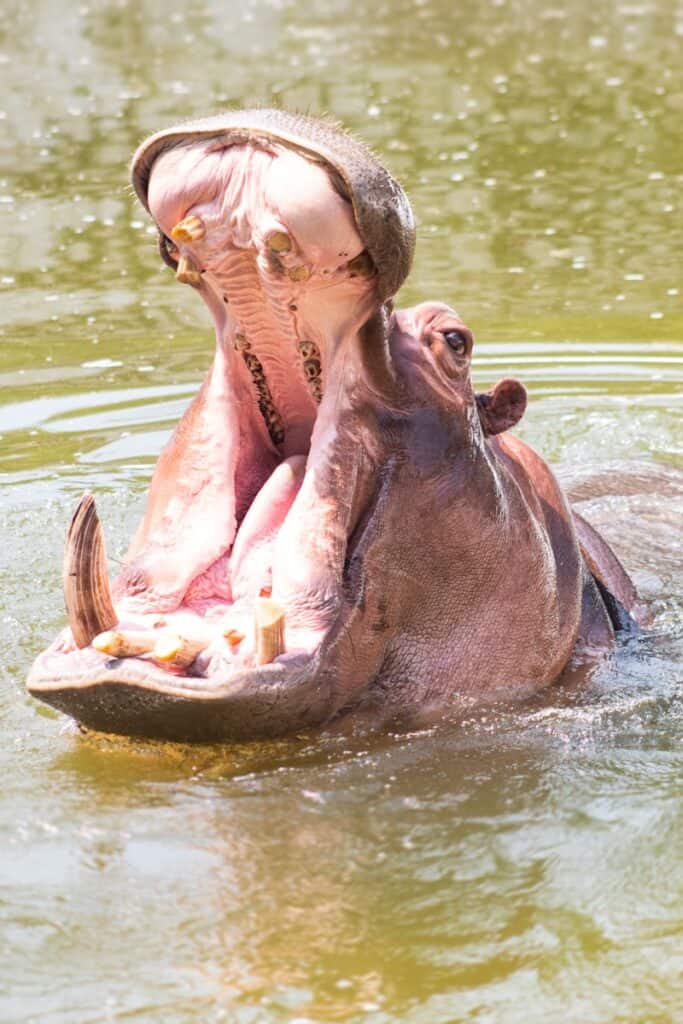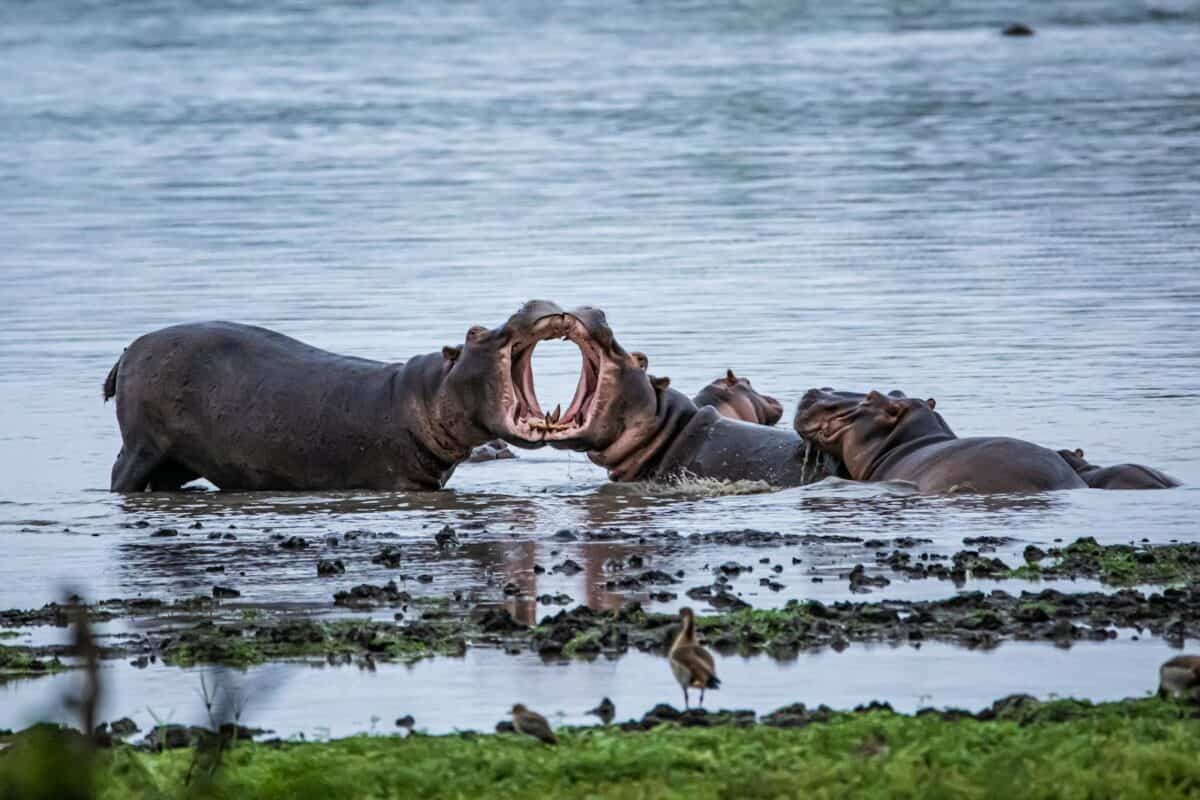The hippopotamus, often perceived as a docile giant with its chubby appearance and serene water-dwelling lifestyle, possesses a surprising and significant strength that makes it one of the most dangerous animals in Africa. Despite its somewhat endearing exterior, this gargantuan mammal harbors formidable power and an aggressive disposition. Dive into the astonishing world of the hippo to uncover the ferocious side of this seemingly gentle giant.
The Mighty Bite: A Jaw-Dropping Force

The hippo’s jaw strength is nothing short of extraordinary. Capable of exerting a bite force of around 1,800 PSI (pounds per square inch), this places them among the strongest biters in the animal kingdom. This immense power allows them to snap a small boat in half or to dispatch a crocodile with a single chomp, illustrating the formidable arsenal hidden within their huge mouths.
Unexpected Agility: Speed That Defies Their Size

While their bulky physiques may suggest a slow, cumbersome nature, hippos can reach speeds of up to 19 miles per hour on land. This speed, coupled with their unpredictable behavior, makes them a serious threat to anyone who ventures too close, despite the common belief that they are sluggish creatures.
A Habitat of Power: The Water Is Their Domain

As semi-aquatic animals, hippos are perfectly adapted to life in the water. They are buoyant and agile underwater, using their powerful legs to propel themselves effortlessly. Their eyes, ears, and nostrils are located on the top of their heads, allowing them to see, hear, and breathe while mostly submerged, making them adept at ambushing potential threats or prey.
Social Structure: The Dynamics of Dominance

Hippos live in groups sometimes numbering over 30 individuals, called pods. Within these groups, social structures are maintained through aggression and displays of power. Dominant males, or bulls, fiercely defend their territory and the herd from intruders, showcasing why their astonishing strength is vital for maintaining hierarchy and order.
The Weight of Power: Sheer Mass as a Defensive Tool

A fully-grown adult hippo can weigh between 3,000 to 4,000 pounds, with males reaching up to 5,000 pounds in some cases. This immense weight, combined with their tough skin, provides a formidable defense against predators and rivals, making them nigh invulnerable in confrontations.
Surprising Weaponry: Teeth That Tell a Story

Beyond their jaw strength, hippos wield long, self-sharpening canine teeth that can grow over one foot in length. Unlike other herbivores, hippos use these enormous tusks not for feeding, but for fighting – a clear testament to their role as fierce protectors of their territory and young.
Feeding Habits: Sustenance Equals Strength

Hippos are primarily grazers, venturing out at dusk to consume up to 80 pounds of grass a day. This diet is pivotal in maintaining their colossal size, fueling the incredible energy needed for their daily activities and unexpected bursts of speed and aggression.
Protective Mothers: Fierce Family Guardians

Female hippos, or cows, exhibit strong maternal instincts. They are known to be highly protective of their young, often showing aggression toward any perceived threats. This protective behavior ensures the survival of calves in the sometimes harsh environments of Africa.
An Ecosystem Engineer: The Hippo’s Environmental Impact

Despite their dangerous tendencies, hippos play a crucial ecological role. Their movement between land and water helps create and maintain the channels and paths used by other wildlife. Their large aggregations and grazing activities contribute to shaping the landscape, highlighting their impact beyond just physical strength.
The Territorial Beast: Vigilant and Aggressive

Hippos are tremendously territorial, especially when it comes to their aquatic habitats. Bulls are known to display aggression to defend their space from intruding males or other animals, including humans, making them a formidable force when protecting their domain.
Surviving in a Hostile World: Threats to Hippo Populations

Despite their strength and dangerous reputation, hippos face threats from habitat loss and illegal hunting for their ivory-like teeth and meat. Conservation efforts are vital to preserving these powerful animals, whose presence is key to the balance of their ecosystems.
In conclusion, the hippopotamus is much more than meets the eye. Their incredible strength, vast territoriality, and surprising agility define them as one of Africa’s most dangerous animals. Understanding their true nature dispels myths of their gentleness and underscores their importance within their natural habitat. As such, appreciating and protecting these remarkable creatures is essential for maintaining the delicate balance of the ecosystems they inhabit.
- 10 Creatures That Can Survive in the Harshest Places on Earth - August 19, 2025
- This Whale Sings in a Unique Pitch - August 19, 2025
- 10 Ways Dogs Know Their Owners Are Sick Before Doctors Do - August 19, 2025

